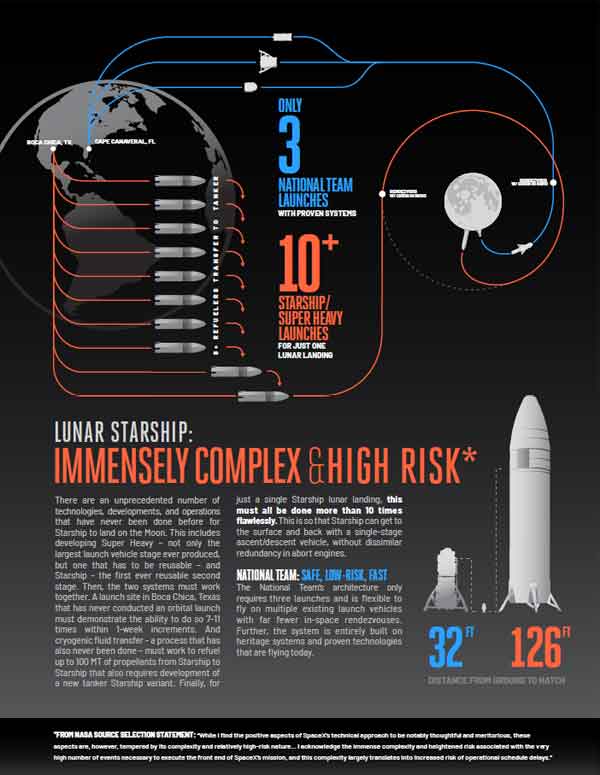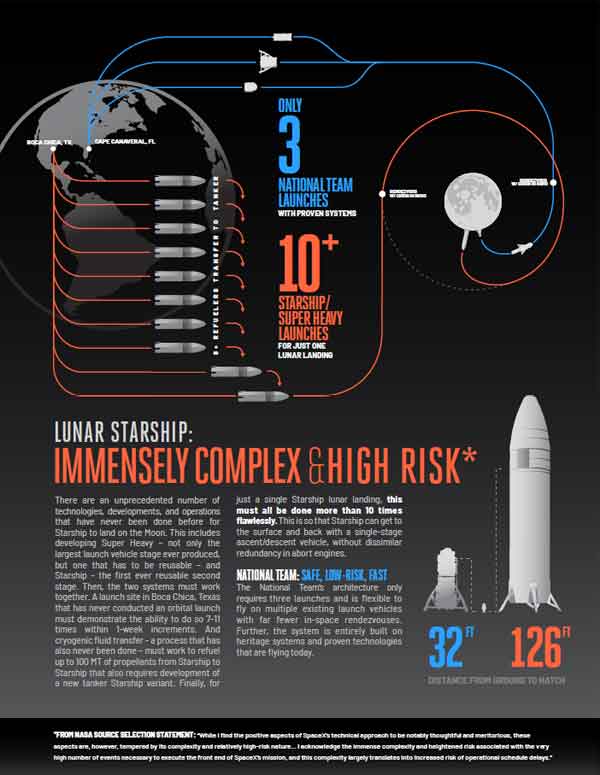
Blue Origin Says: SpaceX’s Starship Lander Too Complex & Risky (Image Credit: SNN)
In the wake of losing its protest over NASA’s decision to award the Human Landing System contract to SpaceX, Blue Origin has released an information graphic calling the Starship system “immensely complex & high risk.”
The comparison on the right shows the distance from the surface to the hatches of the two vehicles. The text from the infographic is reproduced below.
LUNAR STARSHIP: IMMENSELY COMPLEX & HIGH RISK
There are an unprecedented number of technologies, developments, and operations that have never been done before for Starship to land on the Moon. This includes developing Super Heavy – not only the largest launch vehicle stage ever produced, but one that has to be reusable – and Starship – the first ever reusable second stage. Then, the two systems must work together. A launch site in Boca Chica, Texas that has never conducted an orbital launch must demonstrate the ability to do so 7-11 times within 1-week increments. And cryogenic fluid transfer – a process that has also never been done – must work to refuel up to 100 MT of propellants from Starship to Starship that also requires development of a new tanker Starship variant. Finally, for just a single Starship lunar landing, this must all be done more than 10 times flawlessly. This is so that Starship can get to the surface and back with a single-stage ascent/descent vehicle, without dissimilar redundancy in abort engines.
NATIONAL TEAM: SAFE, LOW-RISK, FAST
The National Team’s architecture only requires three launches and is flexible to fly on multiple existing launch vehicles with far fewer in-space rendezvouses. Further, the system is entirely built on heritage systems and proven technologies that are flying today.
FROM NASA SOURCE SELECTION STATEMENT: “While I find the positive aspects of SpaceX’s technical approach to be notably thoughtful and meritorious, these aspects are, however, tempered by its complexity and relatively high-risk nature… I acknowledge the immense complexity and heightened risk associated with the very high number of events necessary to execute the front end of SpaceX’s mission, and this complexity largely translates into increased risk of operational schedule delays.”
– Advertisement –









